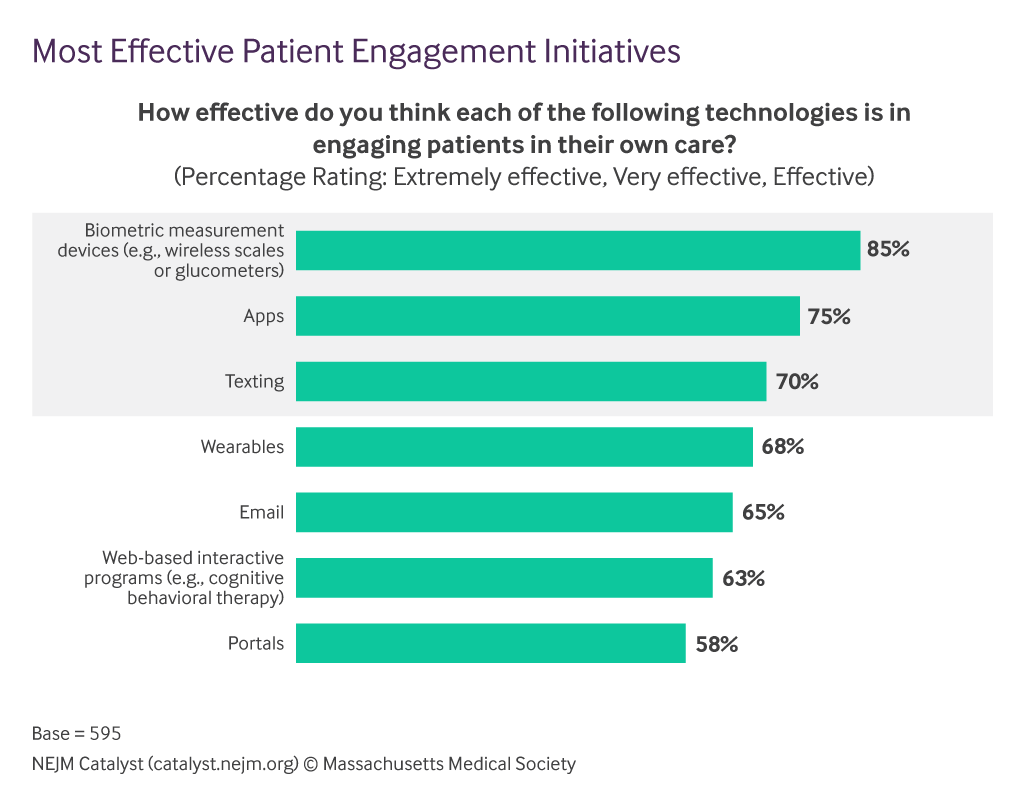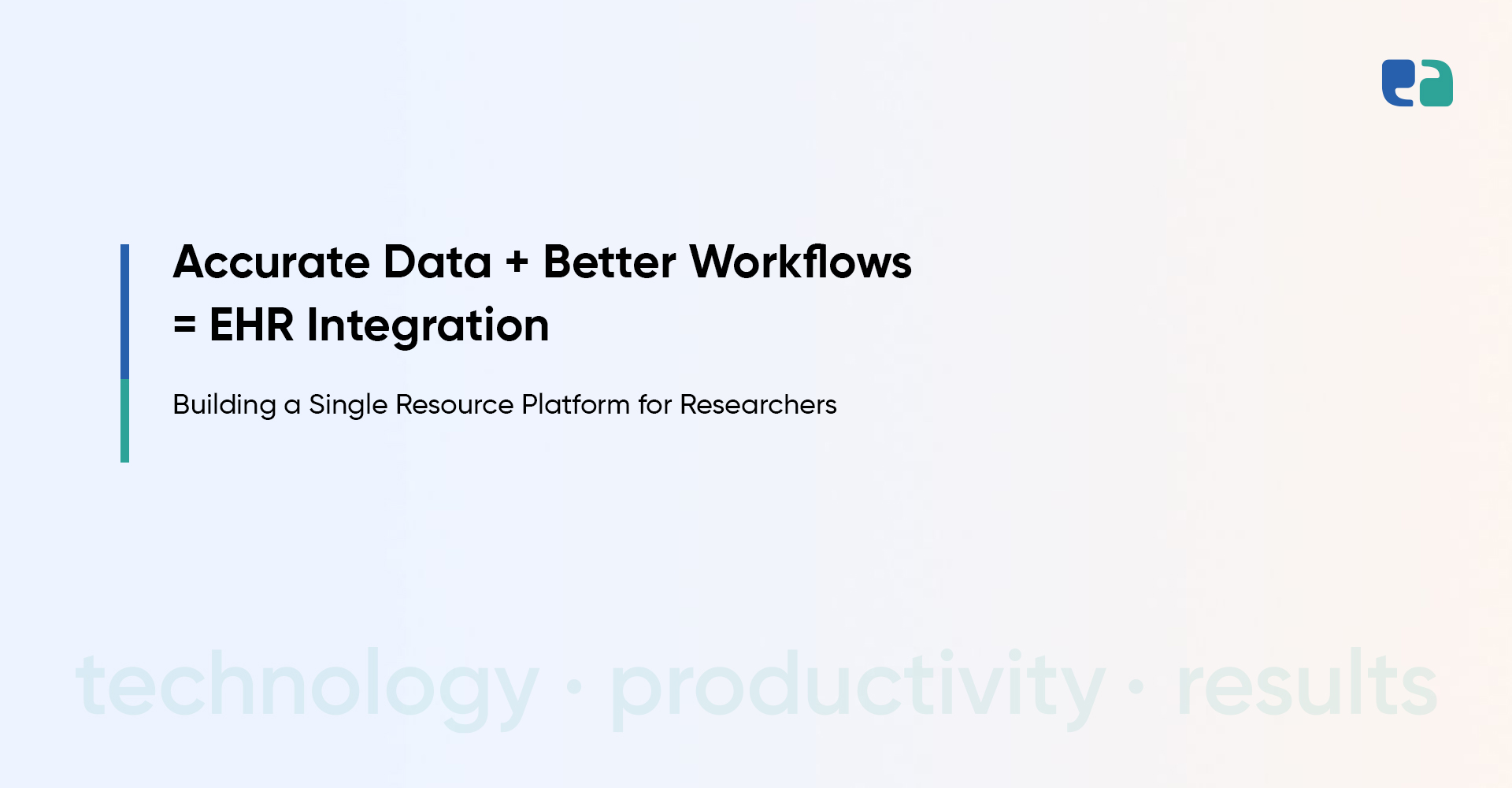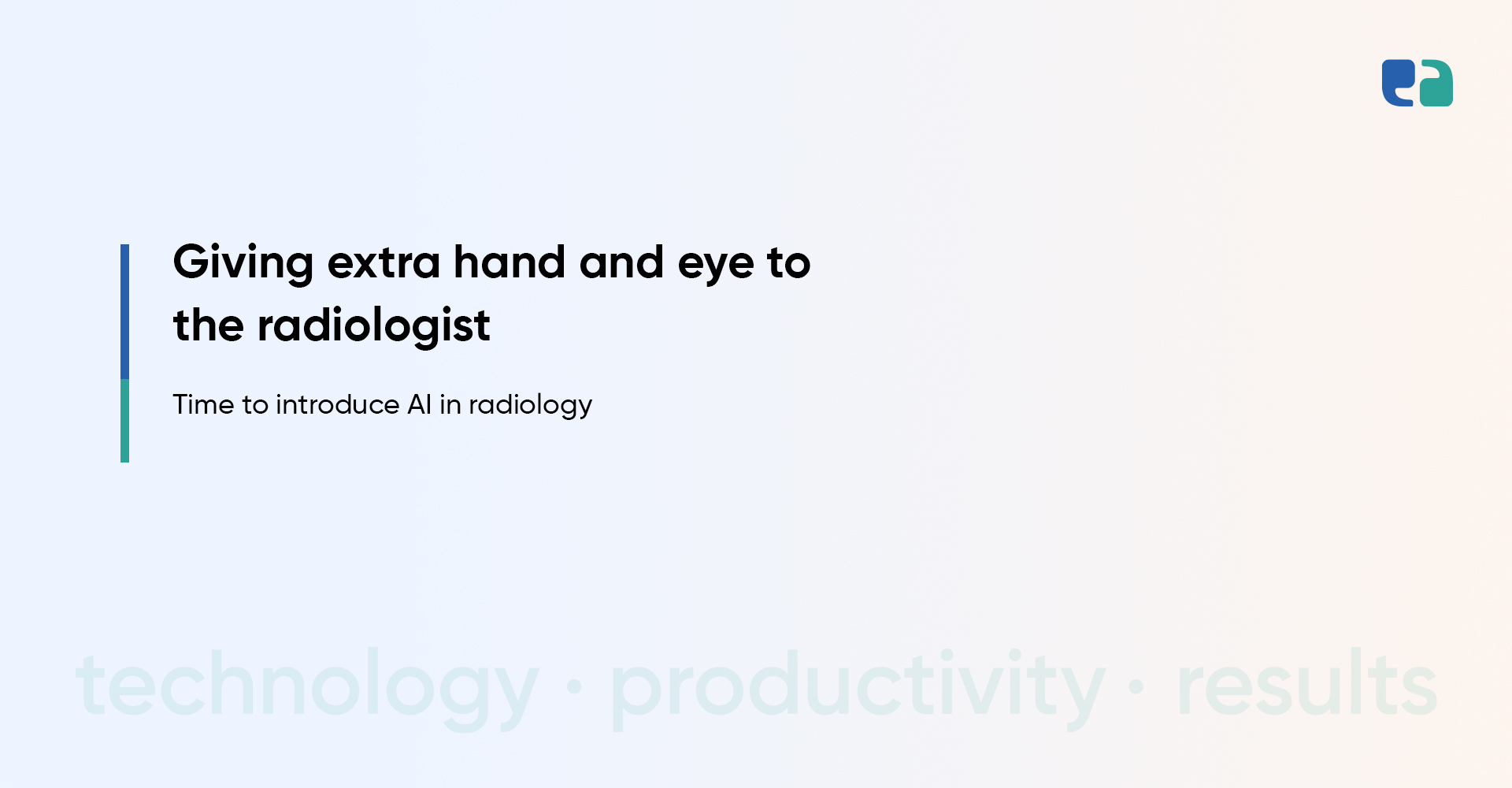Patient engagement is nothing but the meaningful engagement of patients in their care cycle in the form of self-care activities that include diet, medication, exercise, follow-ups, records keeping, etc.
Asking questions regarding their health and getting diagnostic tests done on time is also what is called patient engagement.
With the highest level of patient engagement, providers are more likely to deliver exceptional care which converts into results pretty fast.
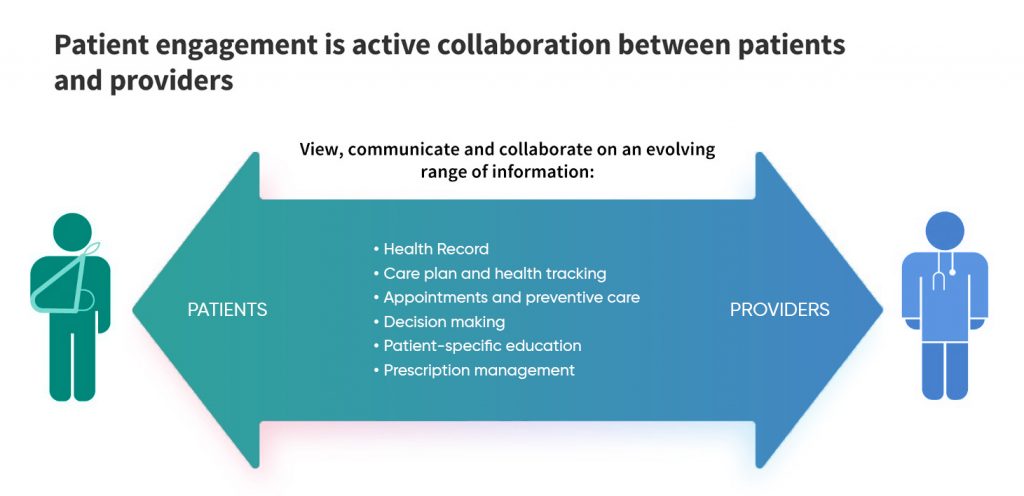
To make patients the leading character of their care cycle, providers are leveraging patient engagement platforms or software as manual collaboration with hundreds of patients is not feasible.
Because of its wide usage, the patient engagement software market will be worth $27.9 billion by 2027.
What is the Role of Patient Engagement in Healthcare?
All healthcare professionals are well aware of their roles.
They always go the extra mile to serve patients to recover them faster.
However, it is not feasible for providers to keep an eye on each patient for 24 hours.
Here is where patient engagement comes in.
It enables patients to look after themselves while care providers are away, or after discharge – by following all self-care guidelines shared by their care team.
If a patient successfully engages in his/her care cycle, he/she is more likely to recover quickly with minimum efforts of providers.
This way, an engaged patient also helps providers reduce the time they generally spend on each patient and invest this saved time to serve more patients.
Meaning, patient engagement not only benefits patients but also reduces the workload of providers and opens a window of opportunities to serve more patients which would lead to a shorter wait time to see a provider.
Apart from this, a higher patient engagement reduces hospital stay and increases the number of vacant beds which can draw a line between life and death during the situation as we had in 2020 and 2021.
So, in essence, patient engagement has the power to solve some of the biggest age-old healthcare challenges our healthcare system has been facing.
Here’s sharing the care journey of an engaged patient so that you can understand how powerful it is.
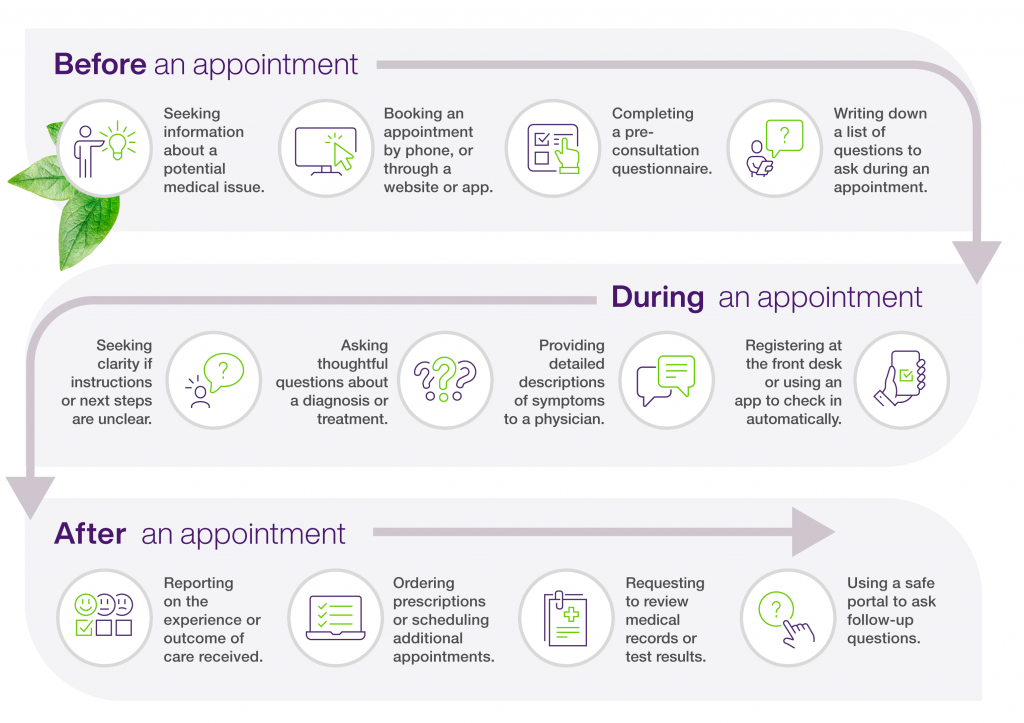
Why is Patient Engagement Important?
As we discussed just now, the practice of high patient engagement benefits both patients and providers.
The following are its top benefits:
What are the Different Levels of Patient Engagement?
Here, it is worth mentioning that a patient can engage in his/her care journey based on his/her medical condition.
For example, a patient having severe mental health issues finds it stressful to engage in a care journey.
So, in such cases, any family member or caregiver must attempt to make the patient engaged in the care journey or do it on behalf of the patient.
Hence, based on the direct or indirect engagement of the patient, there are major 3 levels of patient engagement.
How to Increase Patient Engagement? A Step-by-step Guide
We have observed that healthcare entities generally consider patient engagement enhancement as a task and execute it without any proper strategy.
This leads them to extra complexities and poor patient experience.
Instead, the urgency is to consider patient engagement enhancement as a process that needs to be carried out precisely while keeping KPIs in mind.
And since technology is very greatly involved in these strategies, several healthcare settings find it overwhelming.
Thus, let us present you with a guide to increasing patient engagement.
Step 1: Set a Strategy Accompanied by a Vision
Imagine yourself as an entrepreneur who is planning to launch his/her product by next month.
- Do micro-planning.
- Calculate risks.
- Prepare risk mitigation strategies.
- Set KPIs.
- Hire experts if you are falling short of knowledge.
- Do an internal assessment.
- Validate your financial threshold.
- Know your patient’s needs.
- Know their personas.
- Connect the dots.
- Be mentally, technologically and strategically prepared.
Step 2: Make your Team and Culture Ready for Transformation
Achieving the highest level of patient engagement requires collaborative efforts of providers, staff and patients.
A patient alone cannot achieve it.
Thus, prepare your workforce for this change.
Develop their mindset which is less about individual efforts and more about team efforts.
Inspire them to leverage technology for most of their operations.
Train them on how to create an environment for patients in which they can freely engage.
Step 3: Choose the Patient Engagement Solution
The fact is you will, in any case, require a platform (software) to achieve whatever you have planned in the first two steps.
Based on your budget, operation scale, and future needs, choose between a custom patient engagement solution or 3rd party pre-built solution.
Whatever you choose, make sure it is easily accessible for providers, patients, their caregivers, family members, and healthcare staff.
Step 4: Measure the Performance or KPIs
Don’t go on blindly based on your gut feelings.
Collect the data.
Evaluate it to find whether your strategy is working, where patients still find it overwhelming, are your providers getting any benefits, how much operating cost you are saving, how fast patients are recovering etc.
Once you have answers to such questions, you can easily scale up or down the patient engagement strategy.
Different Technological Solutions to Increase the Patient Engagement
Manual healthcare operations are becoming impossible with the increasing number of patients a provider handles every day.
The severe healthcare labor shortage makes things worse.
Thus, the only workable solution for any healthcare operation that needs to be carried out in mass is a mobile app or web app.
The following are the top technological solutions that can make patient engagement achievable and easy.
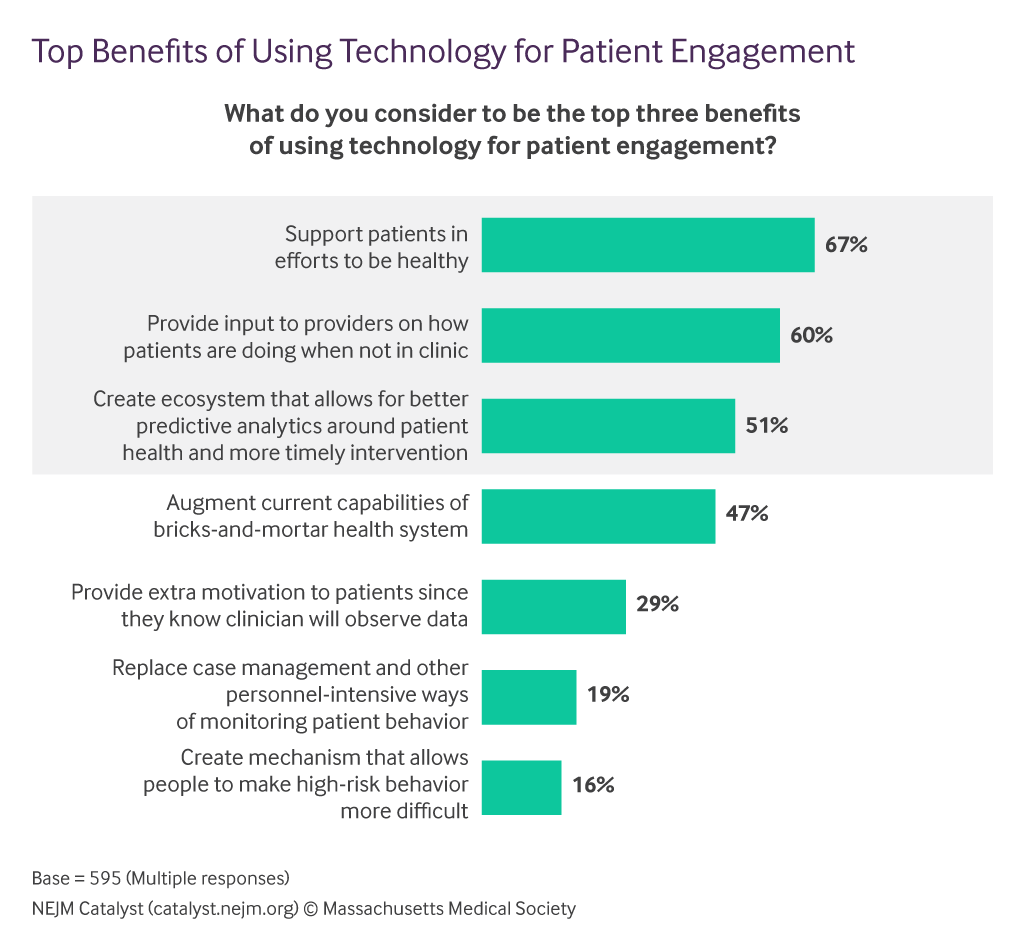
Patient Engagement 2.0: Achieving it with Advanced Technologies
Even if you deploy a patient engagement platform to make things easy for you, many of the operations you and your patients need to do manually, now on that platform, which at some point restricts the ROI opportunities.
Thus, if you are really serious about engaging the patients and deriving good ROI at the same time, you must put some advanced technologies to good use.
Here are some of them.
